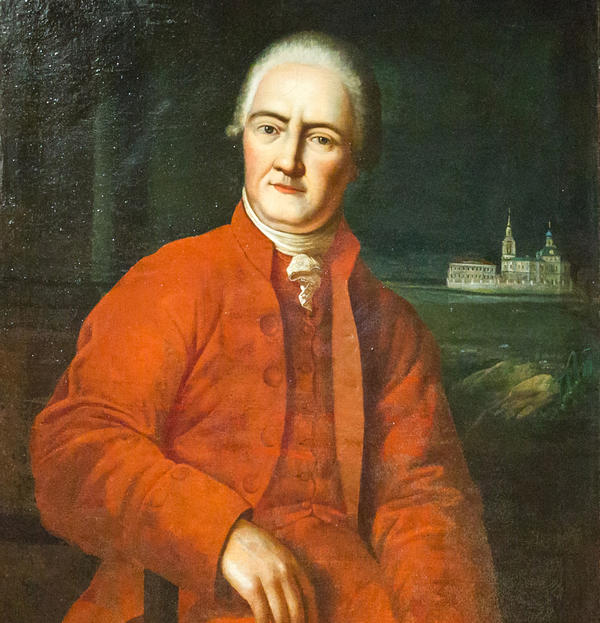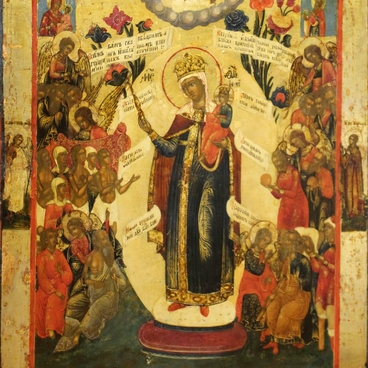The portrait of merchant Pyotr Larin was painted by an unknown artist approximately in 1778. The picture was received by the Museum collection in 1950. It was found by local residents in the village of Dedinovo, Lukhovitsy region, Moscow oblast. They donated the portrait to the Museum. Experts believe that it was commissioned by Pyotr Larin himself.
Portrait of Merchant Larin
Время создания
1778s?
Размер
88x60 cm
Техника
oil on canvas
Коллекция
2
Открыть в приложении#1
Unknown Russian artist
Portrait of Merchant Larin
#3
#5
The unknown artist did the work in the genre of a semi-ceremonial portrait which was common in the 18th-early 19th centuries. He wanted to show Pyotr Larin’s high standing in society. Rich clothes, neutral background and some tell-tale details demonstrated to the viewers the status of his subject. First-guild merchants were allowed to wear noblemen’s clothes and we see Pyotr Larin wearing a red caftan and camisole common among noblemen. The merchant’s neck is decorated with a white foulard and jabot.
The master depicted the merchant in the spirit of portraits of Trustee Board members. The picture is almost a verbatim replica of the composition and colour palette of one of the canvases in this series. Such similarity was most likely the desire of the customer himself who wanted to be presented as being as close to the nobility as possible. Pyotr Larin is depicted knee-length as well.
The master depicted the merchant in the spirit of portraits of Trustee Board members. The picture is almost a verbatim replica of the composition and colour palette of one of the canvases in this series. Such similarity was most likely the desire of the customer himself who wanted to be presented as being as close to the nobility as possible. Pyotr Larin is depicted knee-length as well.
#6
The subject is sitting in an armchair with a piece of paper in his hand. Art scholars believe that it is an edict by Catherine the Great dated 12 March 1778. In it she approved the project of a Public School in the village of Lyubichi proposed by Pyotr Larin.
#7
The distinctive feature of this picture is the background with a detailed landscape. In 18th century portraits artists would rarely present background objects in fine detail. In this picture, however, the unknown master depicted Pyotr Larin against the background of the Church of Resurrection which he had built. The church is surrounded with green hills, stones and grass.
#9
Pyotr Larin was born in 1735 in the village of Lyubichi. It was about seven kilometres away from the village of Dedinovo of the Ryazan guberniya. Larin came from a poor peasant family. When he was eight, the future merchant worked driving the cattle herd and learned to read and write from the local church sexton. At fourteen he served drinks in a local pub. There he was noted by a liquor tax collection officer who offered him a cashier’s job in St. Petersburg. The capital made him quite well-to-do and he began to trade in bread, fish, and hemp.
#10
Due to his entrepreneurial talent, at the age of forty Pyotr Larin became a first-guild merchant. It was the highest merchant guild and belonged to the third estate following the nobility and clergy. In total, there were three merchant guilds. Membership in a guild was accorded upon payment of a fee.
Owner of handsome capital, Larin was engaged in charity and did a lot for his community. He paid to build a two-tier church, the Church of Resurrection, in the village of Lyubichi, with a vocational school and a lyceum attached to it. He also designed the first private bank for farmers built in Russia.
#11
New Jerusalem Museum
читать дальшескрыть
00:00
00:00
1x
Portrait of Merchant Larin
Время создания
1778s?
Размер
88x60 cm
Техника
oil on canvas
Коллекция
2
Открыть в приложении
Поделиться



